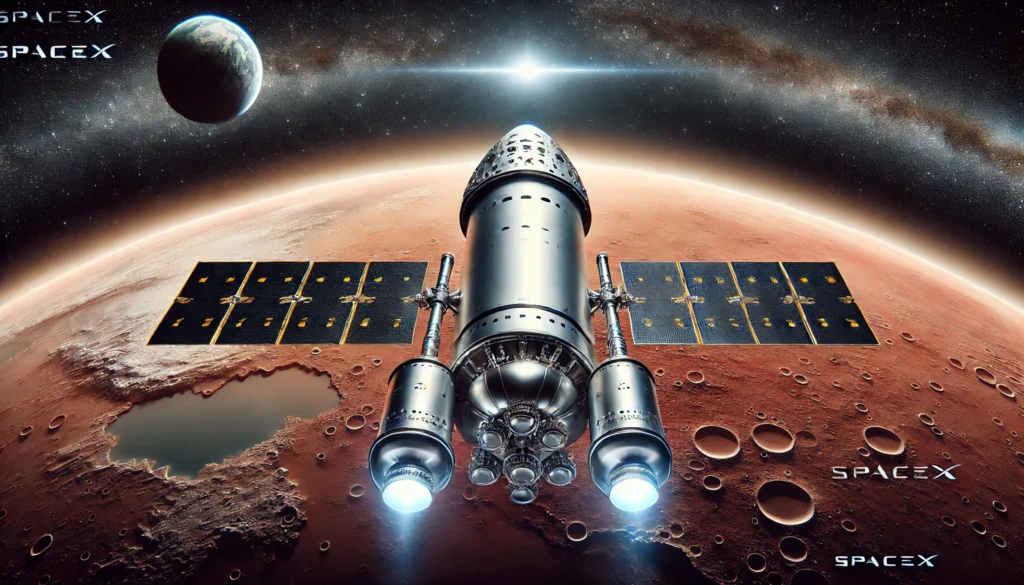SpaceX’s Starship is set to revolutionize space travel, offering unprecedented capabilities for interplanetary missions. Designed as the most powerful launch system ever developed, Starship aims to carry up to 100 people on long-duration flights to destinations like Mars and beyond. Its emphasis on reusability is poised to significantly reduce the cost of access to space, making extraterrestrial exploration more attainable than ever before.

A New Era of Spacecraft Design
Starship represents a significant leap in spacecraft design. Standing at 120 meters tall, it is the largest and most powerful rocket ever built. The vehicle consists of two stages: the Super Heavy booster and the Starship spacecraft. The Super Heavy booster is equipped with 33 Raptor engines, providing the thrust needed to escape Earth’s gravity. The Starship spacecraft, which sits atop the booster, is designed for deep-space missions and is powered by six Raptor engines. This configuration allows Starship to carry substantial payloads and passengers to a variety of destinations.
Reusability: The Key to Affordable Space Travel
One of Starship’s most groundbreaking features is its reusability. Both the Super Heavy booster and the Starship spacecraft are designed to be fully reusable. After delivering its payload, the Super Heavy booster returns to the launch site and is caught by the launch tower’s “chopstick” arms, allowing for rapid refurbishment and relaunch. The Starship spacecraft is also designed to be reused multiple times, with the capability to land back on Earth or other celestial bodies. This approach aims to drastically reduce the cost of space travel, making it more accessible for a variety of missions.
Recent Test Flights: Progress and Challenges
SpaceX has been actively testing Starship to validate its design and performance. On January 16, 2025, the seventh test flight of a fully integrated Starship was conducted from SpaceX’s Starbase facility in Texas. The 403-foot-tall vehicle lifted off successfully and achieved stage separation. The first-stage booster, called Super Heavy, made it back down to Starbase for a dramatic catch by its launch tower’s “chopstick” arms. However, during the Starship spacecraft’s initial burn, its engines experienced premature shutdowns, followed by a total loss of telemetry. The vehicle was observed exploding over the Turks and Caicos Islands, likely due to a fuel leak. Despite this setback, each test provides valuable data, bringing SpaceX closer to its goal of making space travel more accessible.
Also Read : How Interstellar Propulsion Systems Are Taking Us Beyond the Stars
The Path Forward: Enhancements and Future Plans
In response to the challenges encountered during recent test flights, SpaceX has implemented hardware changes on upcoming Starship vehicles to improve leak reduction, fire protection, and refined operations. These enhancements are aimed at increasing the reliability and safety of the spacecraft. Looking ahead, SpaceX plans to conduct additional test flights to validate these improvements and move closer to operational missions. The company envisions Starship playing a pivotal role in a variety of applications, including satellite deployment, space station resupply, lunar exploration, and eventually, crewed missions to Mars.
Conclusion
SpaceX’s Starship is poised to transform the landscape of space exploration. Its innovative design, focus on reusability, and ambitious mission profile represent a significant advancement in aerospace technology. While challenges remain, the progress made thus far underscores the potential of Starship to make space travel more affordable and accessible, ushering in a new era of interplanetary exploration.




